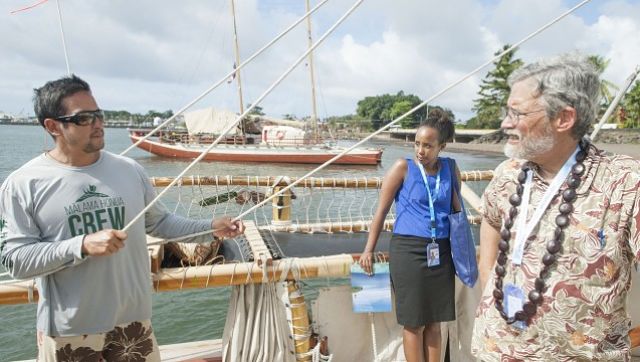New Deputy Director at Center for Science Diplomacy brings experience from academia, White House
About halfway through her PhD program in bioengineering at the University of Pennsylvania, Mahlet Mesfin started thinking about connections outside the micro world of proteins to the macro world of science-society issues. Several years later – and with stints as a AAAS Science and Technology (S&T) Policy Fellow at the Department of Defense and working at the White House Office of Science and Technology Policy (OSTP) – Mesfin has come full circle from the academic and governmental spheres, joining the AAAS Center for Science Diplomacy as its Deputy Director in May.
For Mesfin, the intersections of science, policy, and society stretch back to her time as a graduate student at Penn studying traumatic brain injury. For example, her PhD adviser had advised in safety standards for football helmet design, demonstrating the role that science can play in addressing societal problems – and, as importantly, proposing solutions.
“While doing my PhD, I started thinking about how S&T can help answer bigger questions, such as how it can be used in capacity building in low and middle income countries,” she said. “I also got more involved in my university community and advocating for the needs of underrepresented student groups, such as African-American students and women in science and engineering, which gave me my first experiences in policy.”
Her interest in policy led her to spending six months at the U.S. National Academies for Science (NAS) where she worked on projects related to advancing women in STEM in academia and girls in engineering. Her policy interests have been focused on the intersection of S&T and global issues. Mesfin was able to formally enter the science and diplomacy fields at the United States government level, beginning at the Department of Defense, which at the time was seeking to increase its coordination of international S&T efforts among each of its services. In this role, she interfaced with OSTP, which plays a key role in coordinating international S&T activities across the U.S. government. During Mesfin’s second year as a AAAS S&T Policy Fellow, she came on board at OSTP as a detail, and then stayed on to eventually become the Assistant Director for International Science and Technology.
During her time at OSTP she gained greater appreciation for how science, technology, and innovation (STI) make an impact in the world. “Other countries look to the U.S. STI ecosystem to try and model it to meet their national goals. In the current U.S. political environment, with potential cuts to S&T funding and disinterest in soft power, it is unclear how U.S. government leadership on these topics will change over time.”

PRESIDENTIAL SCIENCE ADVISOR JOHN HOLDREN AND MAHLET MESFIN LEARN ABOUT ANCIENT POLYNESIAN VOYAGING TRADITIONS ABOARD THE HŌKŪLEʻA AS PART OF THE U.S. DELEGATION TO THE THIRD INTERNATIONAL CONFERENCE ON SMALL ISLAND DEVELOPING STATES HELD IN 2014 IN SAMOA | CREDIT: U.S. EMBASSY NEW ZEALAND
However, Mesfin is confident that the role of STI and its role in diplomacy doesn’t have to be led from a governmental level.
“AAAS is in an excellent position to advance the conversation,” she said. “It is a well-respected organization with a convening power able to bring a number of governmental and non-governmental voices together.”
Mesfin sees a part of her role at the Center for Science Diplomacy as helping to continue to define science diplomacy in the context of current events. “It is paramount that scientists have a seat at the table in relevant matters of foreign policy. I am excited to be a part of a team that is focused on these types of conversations.”